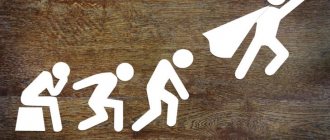Courses and trainings in public speaking and craftsmanship
The origins lie in childhood. This is where correct posture and the foundations of physical and vocal skills are laid. Unfortunately, the human body is very vulnerable during its formation. But, fortunately, our body, even in adulthood, remains flexible enough to catch up.
We do not waste precious time on a scrupulous analysis of the traumas and influences that became the probable cause of speech problems - we work with what we have. Our speech and communication trainings for children, teenagers and adults are designed for all age groups.
Trainings for children include everything that constitutes training, the “school” of the studio. Voice, speech, movement, vocal and communication lessons. This is the “runway”, the foundation, without which there is no path to adulthood, to a professional career. We make full use of game techniques, and, if necessary, organize individual lessons and personal consultations for parents.
Communication training for teenagers required the use of a large amount of material from related disciplines. Young people learn to control biological and social mechanisms using more than one hundred exercises. Teenage communication is inextricably linked with the growth and development of personality. Teenagers have a keen sense of beauty, charm, charisma - and enthusiastically embody the best examples in their behavior. Beautiful timbre, depth and charm of the voice, richness of language, facial expressions and gestures, confident, free posture. This is the portrait of a man for whom nothing is impossible in life. This image radiates success, energy and positivity!
At speech, communication and special trainings for adults, we don’t just talk about smart speakers, a rich vocabulary or video recording techniques, but we teach in practice how to enrich vocabulary, how to become a speaker yourself, how to communicate with any audience, how to use video recording and any modern equipment in their performances. We teach anyone and everyone to master all the techniques of public speaking and interpersonal communication. We teach the art of expressive speech. To become a leader, you must, like Gaius Julius Caesar and Cicero, master all the techniques of oratory. Our school of oratory is the most unique courses in practical speech, public speaking and communication skills in Moscow.
Our courses include speech production, voice production, speech technique, communication, oratory. Developing the Studio's methodology, defending all the best that has been developed over 20 years of its existence, corporate trainings (business trainings) and VIP trainings have embodied all the most effective and fruitful of the Studio's developments.
Speech technique, exercises. Speech breathing - ANNOUNCERS.com
Wind whistle: SSSSSSS...
The sound of the forest:
SHSHHHHHH...
The sound of a mosquito: ZZZZZZZ...
Bee buzzing: ZHZHHHHHHHHHHHHHHHHHHHHHHHHHHHHHHHHHHHHHHH…
The cry and cawing of a crow: KRR! KRR! KRR!...KARR! CARR! CARR!…
Magpie chatter: TRR! TRR! TRR!…
Engine roar: RRRRRRRRRRRRR...
The sound of an electric bell:
RRRRRRRRRRR...
Here you should pay attention to the operation of the diaphragm. Then her voltage is minimal. The air seems to flow out into nature - with the buzz of a beetle or the noise of the forest. When the engine rumbles or an electric bell sounds, the voltage increases. The air is expelled forcefully. When a crow screams and croaks, or a magpie chatters, the diaphragm moves energetically and actively, pushing out the air in jerks.
Voluntary control of exhalation
Imagine that you are standing in the sea up to your chest. Breathing is calm. Hands extended to the sides. Now sharply lower your arms down to your sides, while exhaling air. The sea water raises your hands again - at this time you need to inhale. Lower your arms again, counting out loud: one, two, three. Raise your hands with a sigh and lower them, counting: one, two, three, four, five, six. Then until 9, 12, 15, etc. Then reverse order. It is imperative to coordinate the movement of your hands with the counting. Until you finish counting, don’t give up ahead of time. Try to feel the resistance of the water under your hands. They fall smoothly because... the water holds them, and you can easily manage them: sometimes lower them down more slowly, sometimes faster.
Air intake training
We imagined that we were skiing, with ski poles in our hands. Feet together. Slightly alternately pushing off with sticks, we slide faster and faster. On the count: one! two! (out loud) - pushed off, first with one hand, then with the other, squatting slightly. On the count: three, four - (mentally, not out loud) - inhale, while continuing to push off. Counting: five, six - out loud, seven, eight - mentally. Etc.
And now we continuously, without pauses, count all the numbers out loud, running faster, moving faster, squatting deeper, counting faster. At the same time, do not hold your breath. We automatically take a breath. You should not think about breathing, but listen to how the voice sounds. Speech must be free! If you feel tension in the sound of your voice, then instead of words you can substitute syllables: mmu! mmo! mma! Mme! Mmi! mmm!.. The consonant sound “m” will help relieve tension from the vocal apparatus, because requires less energy to pronounce, while being the most sonorous. And the breath is expelled in jerks on the words of the count.
Breath control exercise
Stand in front of the mirror, straighten your back, do not hunch. Fill your lungs with air in three seconds. Take in the air through your nose so that the stream goes into the middle of the nostrils and does not spread along their walls. In no case should the air be drawn in, but flow in smoothly and evenly. Make sure your inhalation is silent. Hold the air for the next three seconds. Keep your ribs raised and spread apart as you inhale in this position. Finally, over the next three seconds, exhale. The air passing through the nose should not touch its walls. The exhalation should be uniform, smooth, without shocks and silent. The lower ribs relax, and the shoulders and upper chest should not droop. Do all this on the first day. On the second day, hold the air for 4 seconds, on the third day - for 5. Let's arrange it in the form of a table:
First day 3 - 3 - 3 Second day 3 - 4 - 3 Third day 3 - 5 - 3 Fourth day 3 - 5 - 4 Fifth day 3 - 5 - 5 Sixth day 4 - 5 - 5 Seventh day 5 - 5 - 5
At first, do the exercise for no more than one and a half minutes. On the first day, do the exercise ten times. On the second day, repeat the previous exercise twice and move on to the next one. And so on. When these exercises are easy, move on to this scheme:
5 — 5 — 6 5 — 5 — 7 5 — 5 — 8 5 — 5 — 9 5 — 5 — 10 6 — 5 — 10 7 — 5 — 10 8 — 5 — 10 9 — 5 — 10 10 — 5 — 10
After two months, the exercise time can be increased from one and a half to two minutes. With a weak and diseased heart, it is necessary to limit air retention in the lungs.
Exercise "hexameter"
Take one of Homer's works. "Iliad" or "Odyssey". For example:
«He walked along a rocky path up from the bay, through the wooded mountains, to where Athena said, where the divine swineherd lived, caring about the affairs of the lord more than all the household, the slaves of Odysseus. He found the swineherd sitting in the hallway. The courtyard stretched out in front of him wide in a place protected all around. He surrounded the entire hut. In the absence of the owner, the swineherd fenced off the yard for the pigs, having hauled stones, without asking the lady, without asking the elder Laertes. Wild pear trees crowned that high stone fence.”
Read aloud one line of poetry in one breath without pauses:
He took a rocky path up from the bay
Then, also without pauses, in one breath, read two lines - the same one and the next one:
He followed the stone path up from the bay, through the wooded mountains, there, as Athena said,
Then three lines:
He went along a rocky path up from the bay Through the wooded mountains, there, as Athena said, Where the divine swineherd lived, about the affairs of the lord
Add one line at a time until you can breathe. Then reverse the order. With practice, you will be able to read quite a lot in one breath. The purpose of these exercises is to develop the mobility and freedom of the diaphragm so that it can serve the speaker’s speech and maintain support under various speech characteristics.
Try to come up with your own breathing exercises. For example, you can imitate the actions of a woodcutter. Accompany the blow of the ax with a sound similar to “he”! The air with this sound is expelled from the lungs and, due to the movement of the diaphragm, they are instantly filled again. Exhalation and inhalation are short, energetic, free. Just don't overexert yourself! Chop easily, playfully.
Don’t let this activity seem like some kind of eccentricity to you. This is a normal feature of voice training. A good mood and game components help to relax the body, especially the muscles of the phonation pathways. And therefore, it is possible to quickly identify the natural timbre of the voice and develop it most effectively. Less irony, more faith, and you will definitely be able to develop your speech and learn to speak beautifully and freely!







